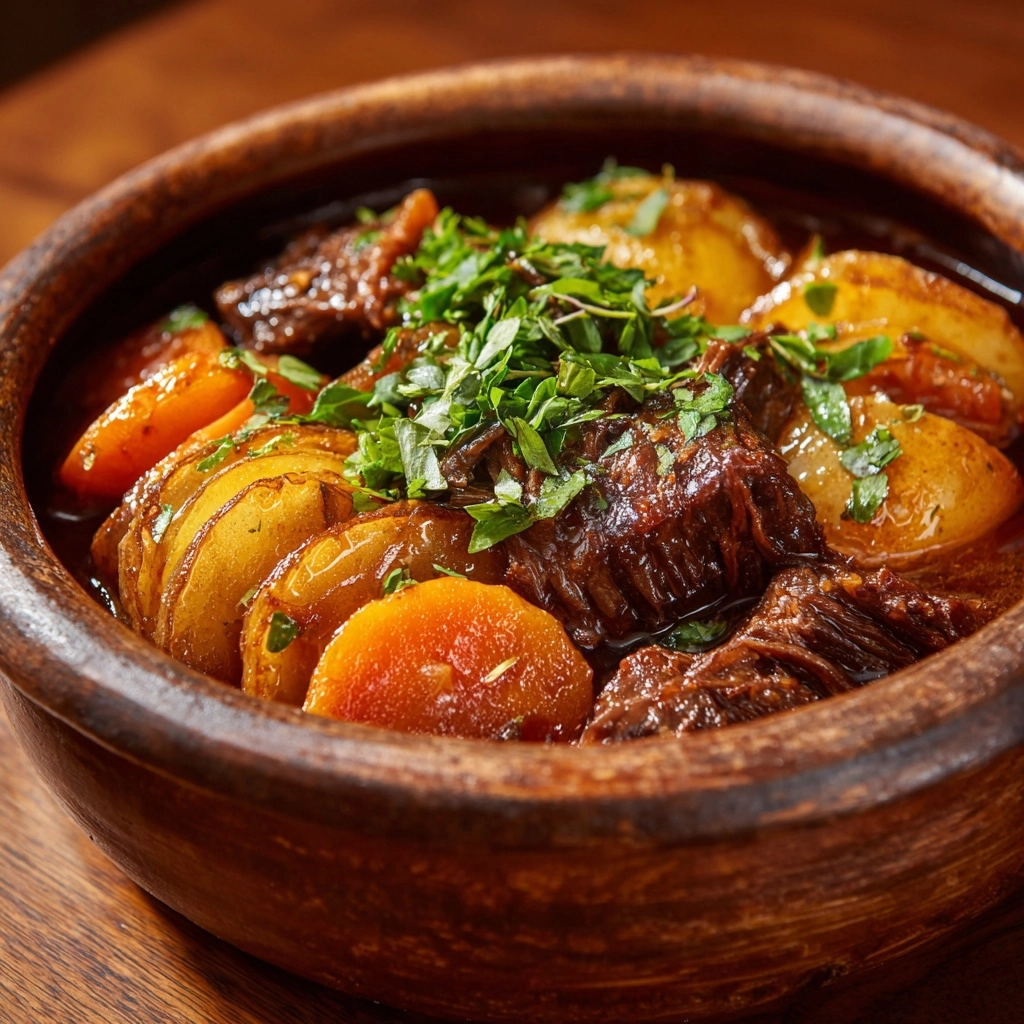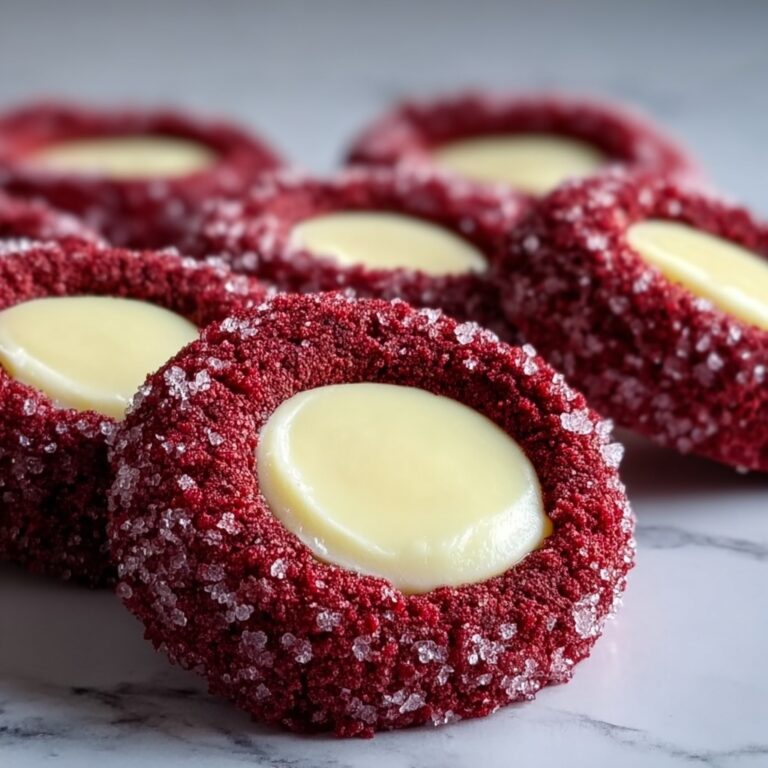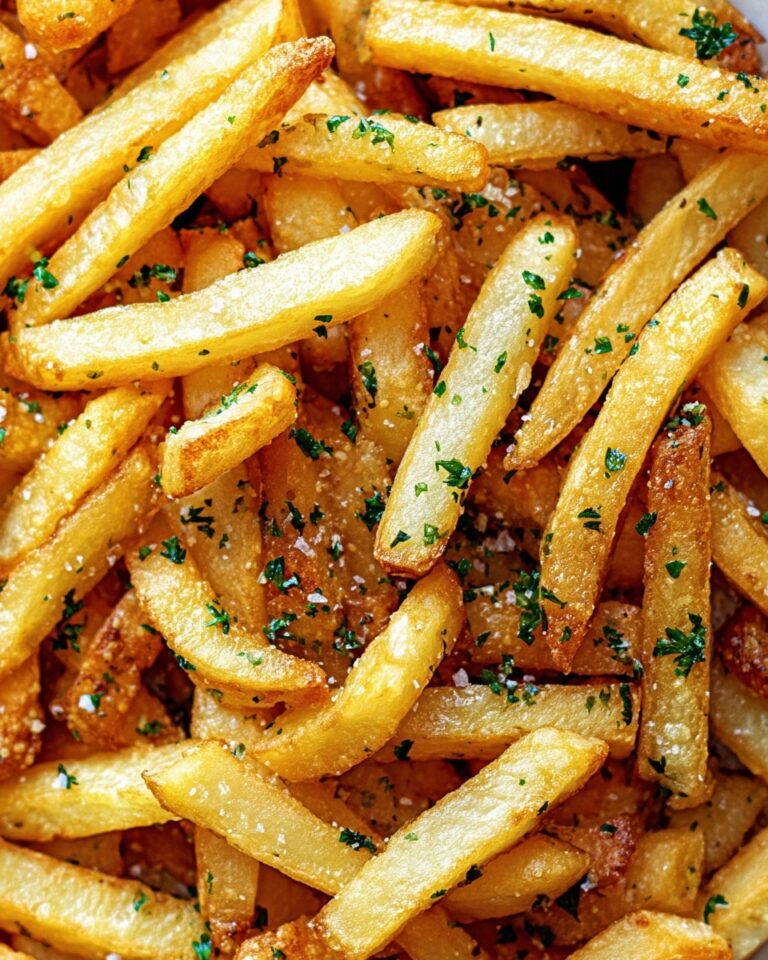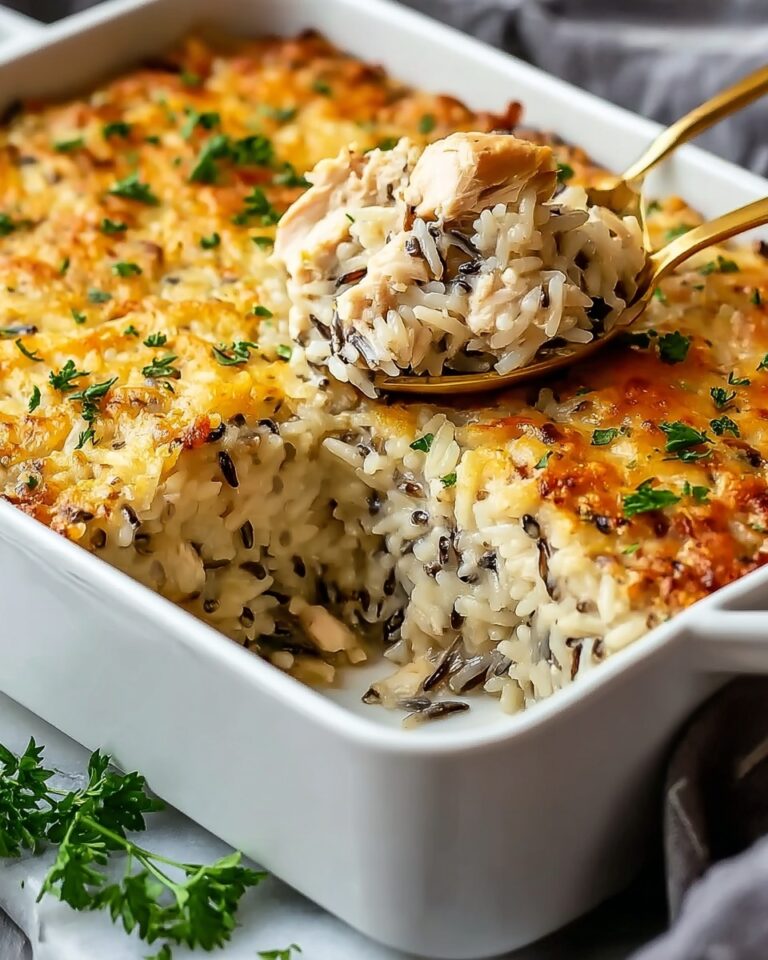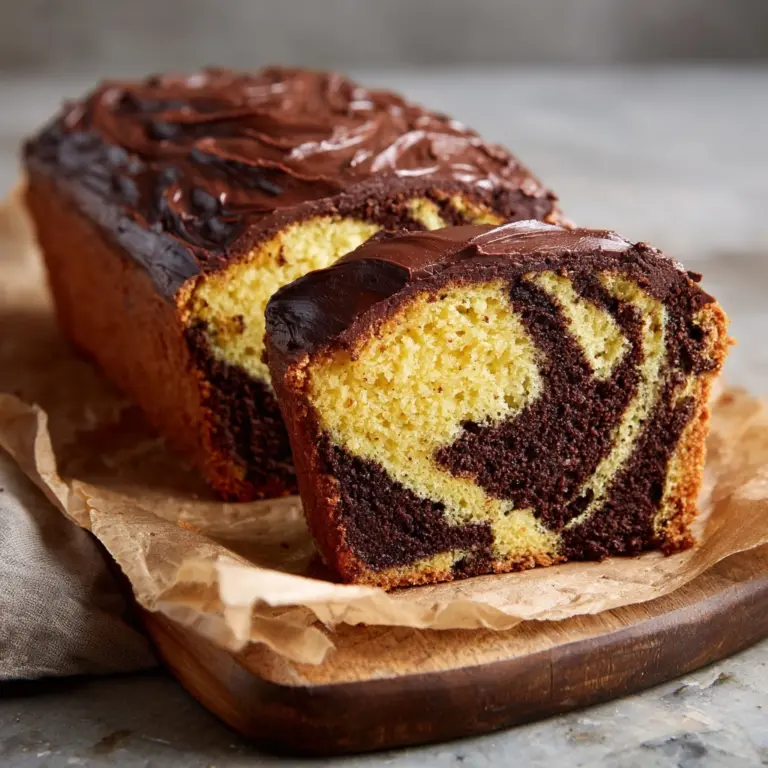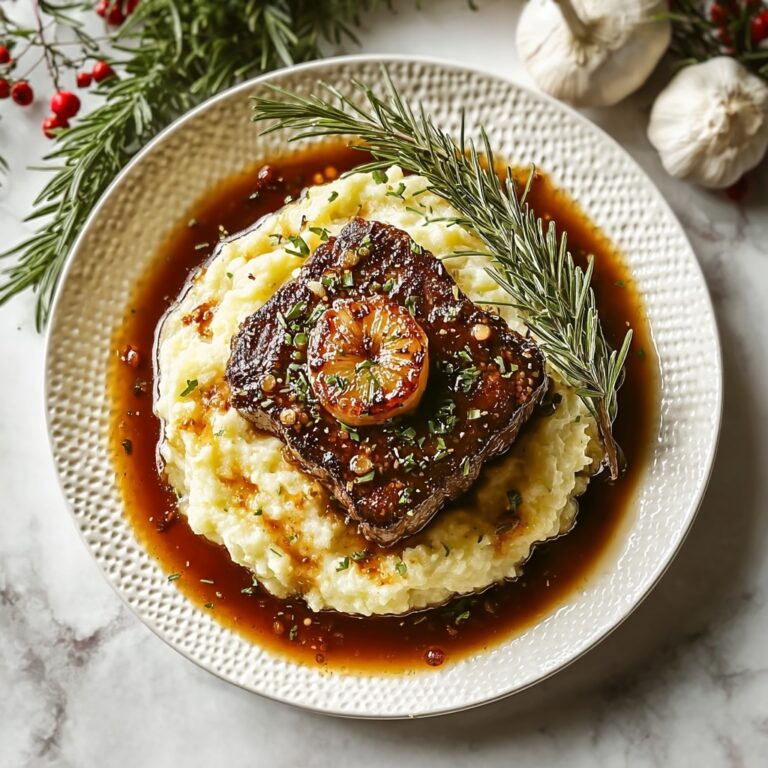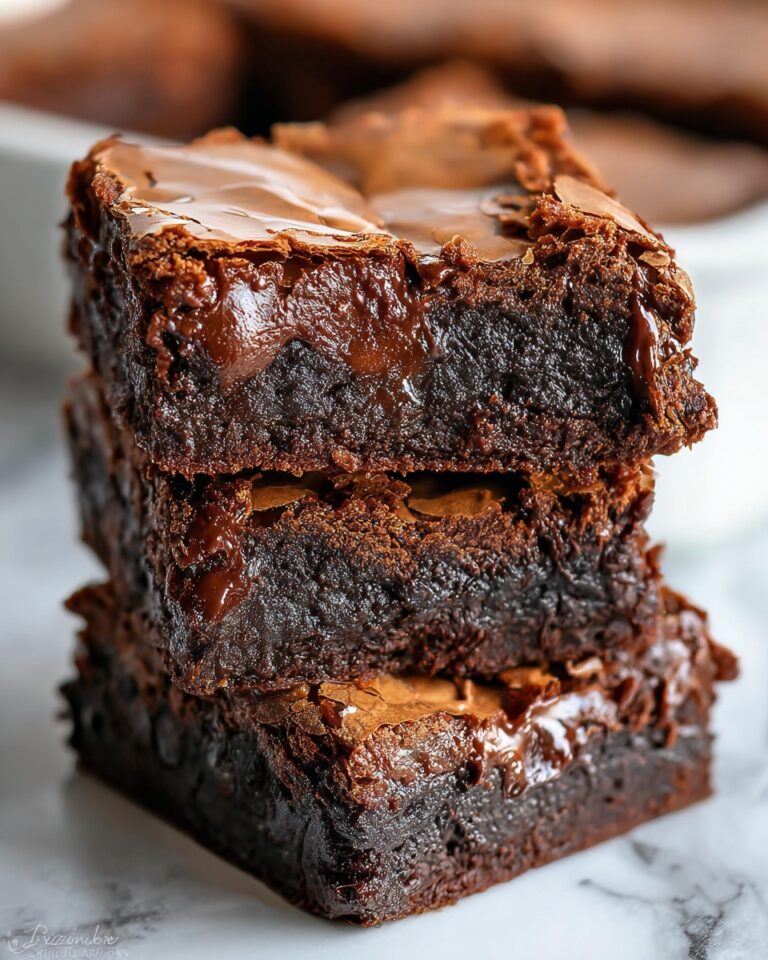If you’re searching for the ultimate comfort food to warm your kitchen and your heart, you can’t go wrong with Traditional Lancashire Hotpot. This beloved dish from the north of England is the embodiment of wholesome home cooking: layers of tender lamb, sweet carrots and onions, all tucked beneath a golden crown of buttery potatoes. Every bite delivers a simple, honest flavor with nostalgic charm and just the right richness—a classic you’ll find yourself making any time you crave a taste of British tradition.
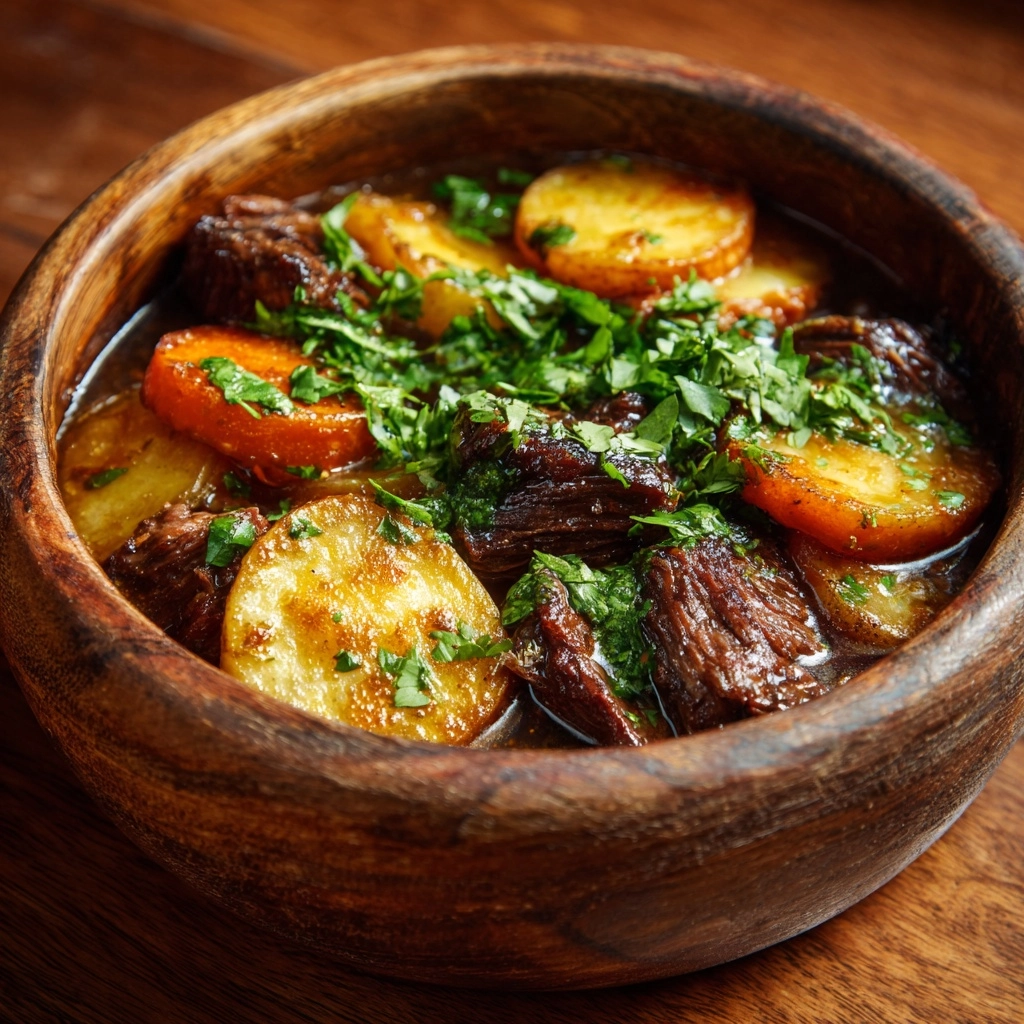
Ingredients You’ll Need
The ingredients for Traditional Lancashire Hotpot are wonderfully straightforward, yet each one plays a crucial role in building layers of flavor, texture, and satisfying color. Trust in the classics: with just a handful of fresh, familiar staples, you’ll have everything you need for a supremely cozy meal.
- Lamb Shoulder or Stewing Lamb: Go for well-marbled chunks—this gives melt-in-your-mouth tenderness and a rich, savory depth unique to classic hotpot.
- Vegetable Oil: A neutral oil for browning the lamb, ensuring delicious caramelization without overpowering flavors.
- Onions: Thin slices become silky and sweet, melting into the sauce for irresistible flavor.
- Carrots: Their gentle sweetness lightens and balances the savory meat.
- All-Purpose Flour: Just enough to thicken the broth and guarantee a luxurious, clingy sauce.
- Beef or Lamb Stock: The savory backbone of your sauce—use homemade or a good quality store-bought version for the best results.
- Worcestershire Sauce: Depth, savory umami, and a dash of tang make this a can’t-miss flavor booster.
- Fresh Thyme Leaves: Fragrant thyme gives a woodsy aroma; dried works if that’s what you have on hand.
- Bay Leaves: Just two are enough to gently perfume the stew as it bakes.
- Potatoes: Thinly sliced russets or Yukon Golds bake up creamy below and crisp on top—a hallmark of Traditional Lancashire Hotpot.
- Unsalted Butter: Brushed on top for extra golden color and the mouthwatering aroma of real butter.
- Salt and Black Pepper: The essential seasoning duo—taste and adjust throughout for a perfectly balanced dish.
- Chopped Parsley (Optional): A sprinkle of parsley lends fresh color and a pop of herbal brightness right before serving.
How to Make Traditional Lancashire Hotpot
Step 1: Brown the Lamb
Start by preheating your oven to 325°F (160°C). Warm the vegetable oil in a large, ovenproof casserole or Dutch oven over medium heat. Pat your lamb chunks dry, season generously with salt and pepper, and brown them in batches—don’t rush this stage, as it builds the deep, browned flavors that make Traditional Lancashire Hotpot so memorable. Once browned on all sides, remove the lamb and set aside.
Step 2: Sauté the Vegetables
In the same pan, add your sliced onions and carrots. Stir and cook for about five minutes, scraping up any browned bits from the bottom. The vegetables should soften and sweeten, creating a beautifully aromatic base that’ll enhance every layer.
Step 3: Make the Sauce
Sprinkle flour evenly over the vegetables and cook for one minute, stirring constantly—it’ll lose its raw flavor and start the thickening process. Gradually pour in your beef or lamb stock while stirring, allowing everything to bubble and thicken. Add Worcestershire sauce, thyme, and bay leaves; return the browned lamb (with any juices!) to the dish. Let this simmer for a further five minutes, bringing all those wonderful flavors together.
Step 4: Layer with Potatoes
Arrange half the sliced potatoes in neat, slightly overlapping rounds over the lamb and vegetable mixture at the base of the casserole. Spoon the meaty filling over this first layer, then top with the rest of your potatoes—again, overlapping them nicely. Take your time here, as these tidy layers will transform into the signature golden crust.
Step 5: Bake to Perfection
Brush the potatoes generously with melted butter and sprinkle lightly with more salt and pepper for irresistible flavor. Cover the dish with a lid and slide it into the oven. Bake for 1½ hours so everything becomes meltingly tender. Finally, remove the lid and continue baking for another 30 to 40 minutes, or until the top layer of potatoes turns gorgeously golden and crisp. Remove the bay leaves, and you’re ready for serving!
How to Serve Traditional Lancashire Hotpot
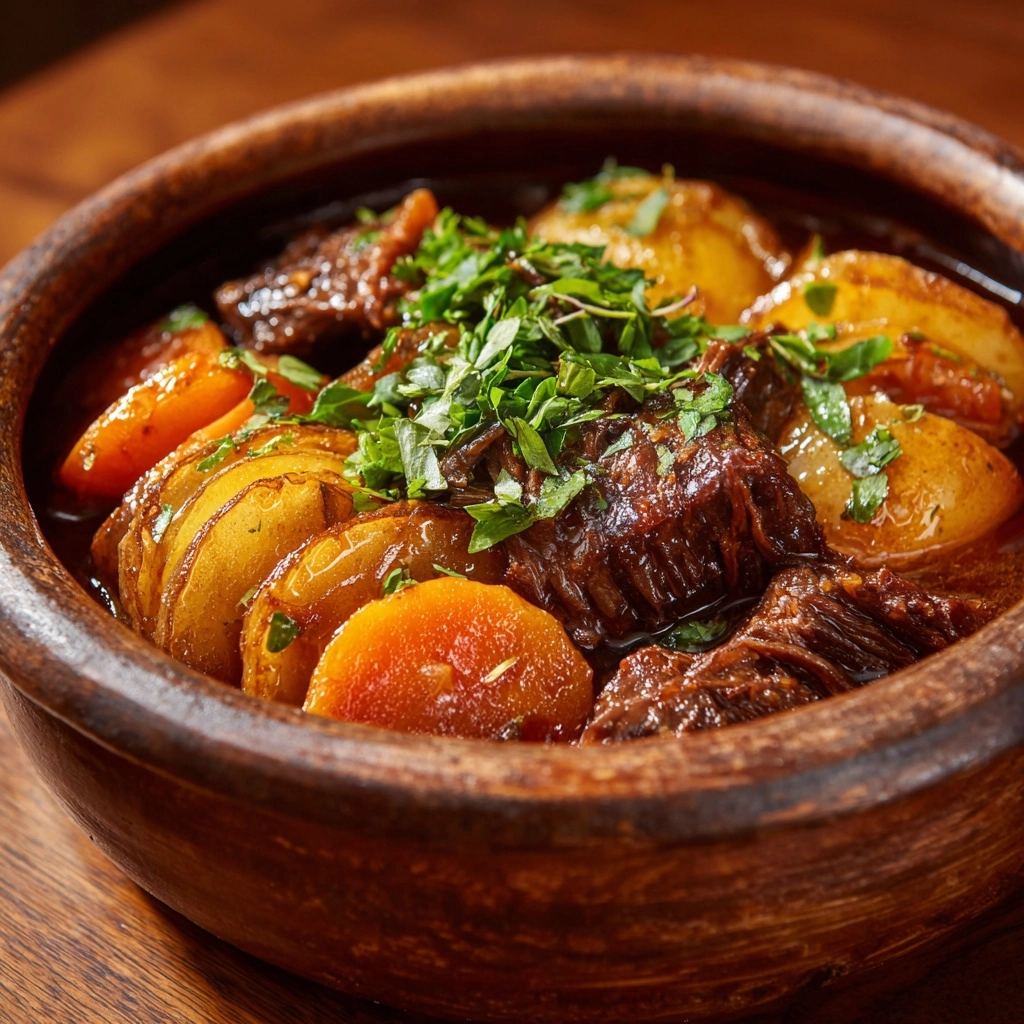
Garnishes
A handful of freshly chopped parsley scattered over the piping hot casserole is the perfect finishing touch. It adds vibrant color and a subtle freshness that brightens the earthy heartiness of Traditional Lancashire Hotpot. For a more old-fashioned touch, a twist of cracked black pepper on top is simple, rustic, and just right.
Side Dishes
Serve Traditional Lancashire Hotpot the way folks in Lancashire have for generations: with tangy pickled red cabbage, which cuts through the richness and adds a lovely crunch. Buttered greens (like kale or Savoy cabbage) make excellent partners as well, rounding out the meal with their color and slight bitterness.
Creative Ways to Present
If you’d like to dress things up, portion the hotpot into individual ovenproof dishes for a personal, bistro-style look. Or, top each serving with a dollop of crème fraîche and a sprinkle of chives for an elegant contrast. Even a spoonful of minted peas on the side adds a pop of flavor and color!
Make Ahead and Storage
Storing Leftovers
Leftover Traditional Lancashire Hotpot stores beautifully in the fridge. Transfer cooled portions to an airtight container and enjoy within three days—the flavors deepen and everything reheats wonderfully, making next-day lunches a treat!
Freezing
To freeze, allow the hotpot to cool completely, then wrap tightly in foil or transfer to a freezer-safe container. It will keep for up to three months. When you’re ready, defrost overnight in the refrigerator before reheating for the best potato texture and even warming.
Reheating
For best results, reheat in the oven (covered, at 350°F) until hot throughout, uncovering for the last 10 minutes to re-crisp the potato topping. You can also microwave individual servings for convenience, but the oven method preserves the classic crispy crust.
FAQs
Can I make Traditional Lancashire Hotpot with a different meat?
While lamb is the star of the show for authentic flavor, you can swap in beef stew meat if needed. Just remember, the taste will change—lamb offers a distinctive savory sweetness that’s hard to beat in this dish.
Is it possible to prepare Traditional Lancashire Hotpot in advance?
Absolutely! Assemble everything up to the baking step, cover, and refrigerate for up to 24 hours before baking. This not only saves time later but also allows flavors to mingle for even deeper savory notes.
Do I have to peel the potatoes?
Peeled potatoes are traditional and create that creamy, melt-in-the-mouth layer. However, when pressed for time or if you like a rustic touch, scrubbed unpeeled potatoes are totally fine—just slice them thinly!
What’s the best potato variety for a classic hotpot topping?
Waxy potatoes (like Yukon Gold) hold their shape and create beautiful, crisp tops, whereas starchy types (like Russets) offer a creamier bite. Choose based on your preference, or use a mix for the best of both worlds.
How can I make the hotpot richer or more flavorful?
For an extra savoury kick, try adding a splash of red wine to the sauce or a tablespoon of tomato paste. Traditional Lancashire Hotpot sometimes included lamb kidneys for depth—add them if you enjoy a bold, old-fashioned flavor profile!
Final Thoughts
If you’re looking to bring a little cozy British warmth into your home, there’s nothing quite like Traditional Lancashire Hotpot. It’s nourishing, deeply flavorful, and truly satisfying—no wonder it’s been a beloved classic for generations! Don’t be surprised if this treasure becomes a much-requested favorite at your table.

